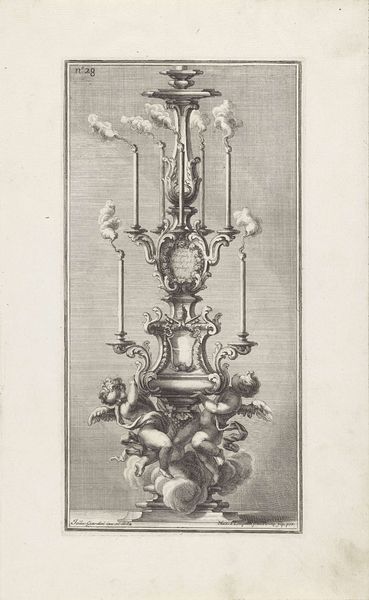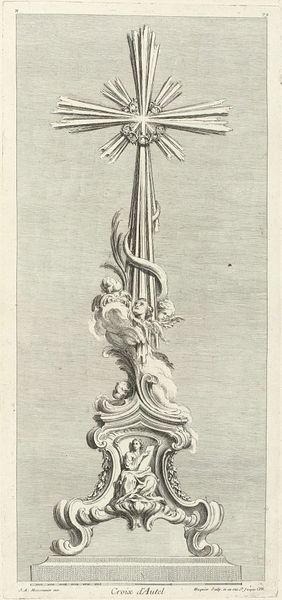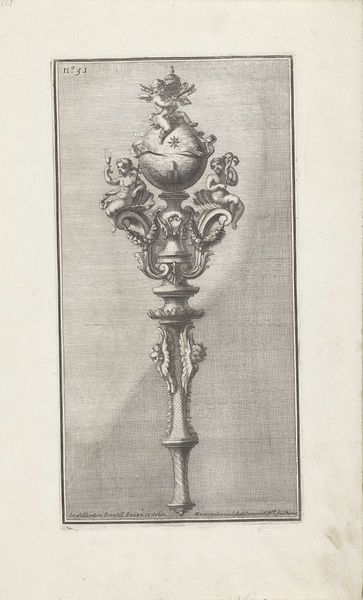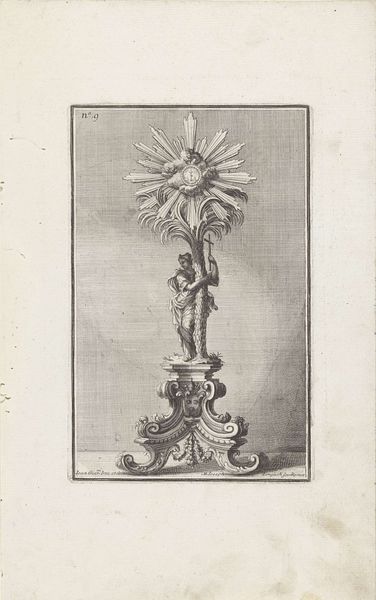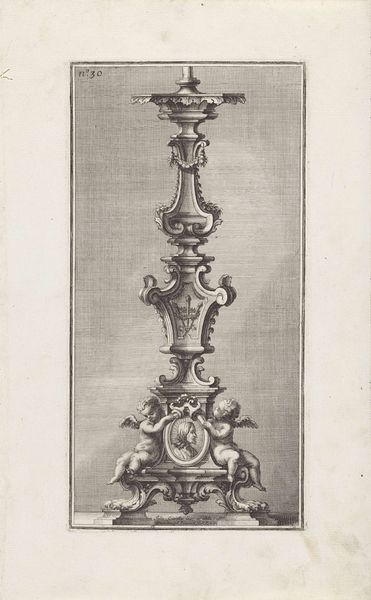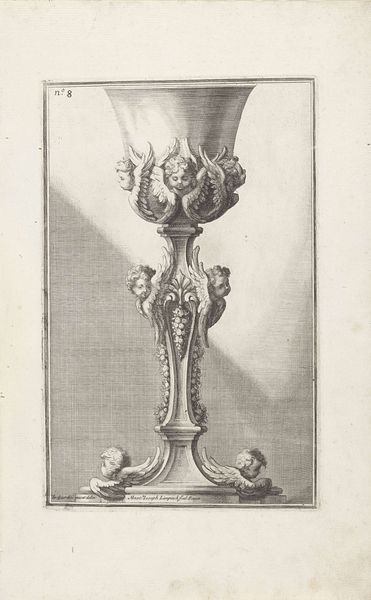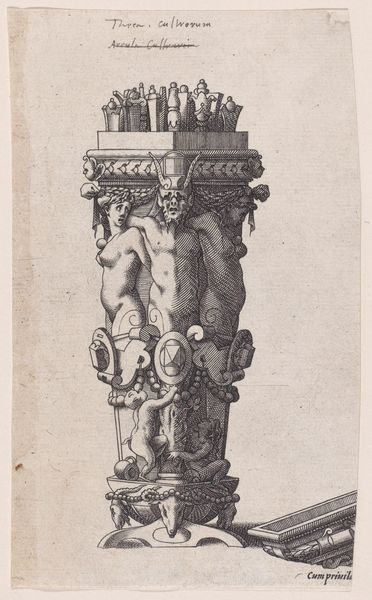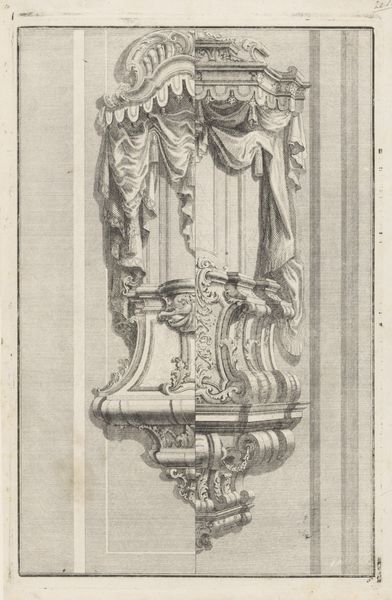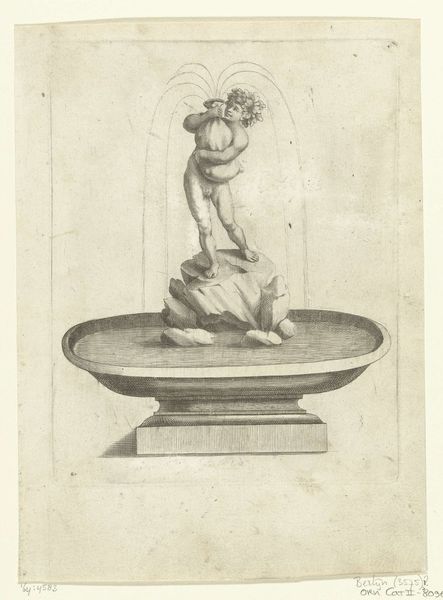
sculpture, engraving
#
light pencil work
#
quirky sketch
#
baroque
#
pencil sketch
#
sketch book
#
figuration
#
personal sketchbook
#
idea generation sketch
#
sketchwork
#
sculpture
#
sketchbook drawing
#
pencil work
#
sketchbook art
#
engraving
Dimensions: height 296 mm, width 154 mm
Copyright: Rijks Museum: Open Domain
Editor: This is Maximilian Joseph Limpach's "Candlestick with Standing Angel," made in 1714. It’s currently housed in the Rijksmuseum. It’s a rather ornate engraving, but the angel gives it a light, whimsical feel. What do you make of it? Curator: I find the interplay of vertical elements striking. Note the strong central axis formed by the candlestick, effectively bisecting the composition. How does the figure of the angel interact with this rigid structure? Editor: Well, she seems to be softening it, literally and figuratively, by supporting it and breaking the strict vertical line with her wings and flowing robe. Curator: Precisely! The artist employs a compelling contrast. The geometric rigidity of the candlestick is juxtaposed with the organic form of the angel. Notice how the textures differ as well—the smooth, polished metal of the candlestick against the soft rendering of the angel’s drapery. Do you perceive any disruption in the harmony between form and function? Editor: It feels balanced to me. The angel appears integral to the design, not merely an added flourish. Her pose mirrors the curves within the candlestick’s design. Curator: Indeed. Furthermore, the cloud motif, at both the base and summit, acts as a framing device. Consider the repetition of forms—the curves of the clouds echoing those of the angel’s wings and the candlestick’s embellishments. The composition has structural integrity. Editor: I didn’t consider the cloud motifs that way before. Now I appreciate how they tie the entire composition together. Curator: This piece offers a rich demonstration of formal contrasts and structural harmonies. Paying close attention to the elements creates new insight. Editor: Thanks, I'll definitely look for that now in other pieces.
Comments
No comments
Be the first to comment and join the conversation on the ultimate creative platform.

